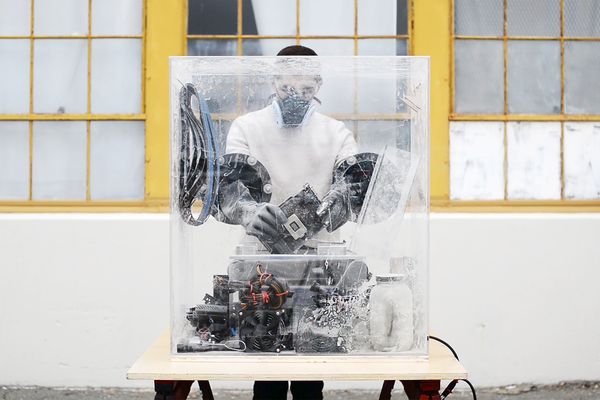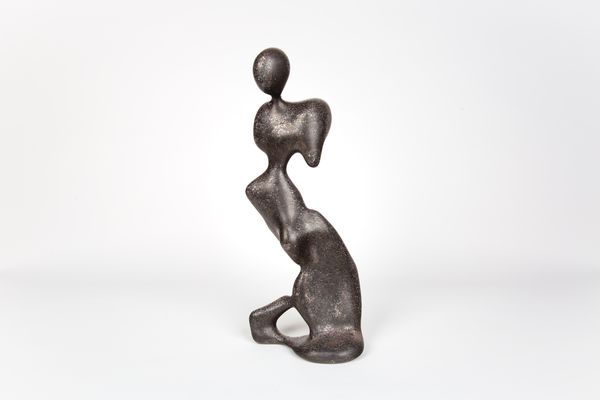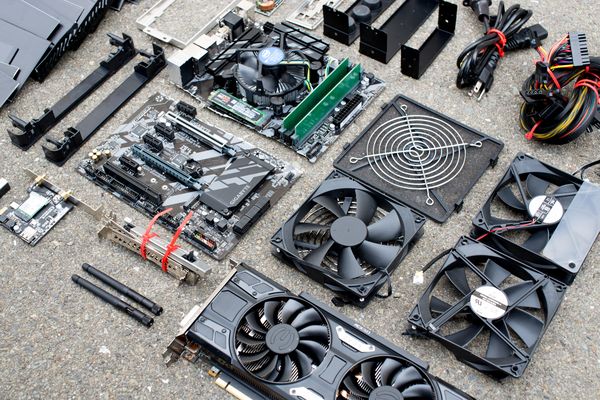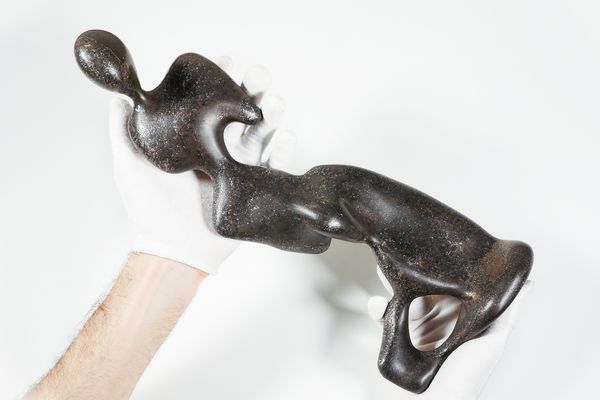Artist Ben Snell manually grinding every component part of Dio the computer to dust
Questioning the creativity, originality and agency of the machine, Ben Snell's Dio is the first ever AI-created sculpture to be sold at Phillips. Executed in 2018, its physical form possesses an uncanny figurative quality: distilling the essence of Greek and Roman sculpture, while simultaneously hinting at the twisting forms of Constantin Brancusi, Jean Arp and Henry Moore. Not only made by the computer, this piece is also materially made from the computer, also named Dio, that conceived it.
Ben Snell Dio, 2018
Dio is short for Dionysus, the Greek god. Snell explained, "In Greek Mythology, the God Dionysus suffers a near-death experience as an infant...Dio the Sculpture bears a similar story of rebirth as the 'twice-born' God, Dionysus. After being ground to dust, Dio the Computer is reborn into a new form. Whereas its previous physicality had been disconnected from its rich inner life, its present beingness affords it a physical integrity holding in reverence its dreams." In addition, Snell added, "Dionysus is portrayed in Greek Mythology as androgynous. So too does Dio's biomorphic form with broad shoulders and an hourglass silhouette represent a queering and feminizing of art history through its reinterpretation and reimagining of classical sculpture."
Components of Dio the Computer, before artist Ben Snell ground them to dust
The entirety of Dio the Computer in dust form, contained within a glass jar
Over the course of months, Snell trained Dio (the computer) about sculptural form by providing it 3D models of classical sculptures from Greek and Roman antiquity, as well as later works made in the classical style, such as Michelangelo's David. He referred to this training as a "prolonged dialogue between teacher and pupil," and described feeling "like a parental figure" during this lengthy learning process. That parental feeling makes sense, given that Snell built Dio (the computer) expressly for this purpose; building Dio was "the first and last thing it ever did."
Ben Snell Dio, 2018
Describing his process as a "ritual sacrifice to usher Dio onward into its afterlife," once the computer conceived the form, Snell simply "ground every component of the computer—the motherboard, memory, CPU, GPU, cables and case—into a fine powder. Then, [he] mixed this powder with clear resin and cast it into the three dimensional form it dreamt of—a form of equal volume as the original computer." And thus, the computer assumes a newfound physical agency through reconfigured bits of silicon, copper, steel and plastic while traces of the computer’s past processing power live on within its bodily form. Emphasizing the differences between this sculpture and most contemporary AI art, Snell noted that "instead of learning to balance light and shadow, Dio learned to balance positive and negative space. Instead of focusing on lines and contours, Dio focused on defining surface curvatures."
Ben Snell Dio, 2018
This project was in part inspired by sculptor and conceptual artist Robert Morris, whose piece Box with the Sound of its Own Making consisted of "a simple wooden box from within which emanate the sounds of its making: the sounds of Morris building this box by hand." Like that piece, Dio attempts to achieve "a harmony between the tangible and virtual realities of the computer."
Despite the collaborative nature of his relationship with Dio, he emphasized that "I consider myself, not the computer, to be the Artist.... Our interactions might loosely be described as a dialogue; however, I refrain from calling this a “collaboration” because it connotes a tighter, more succinct and immediate exchange of ideas, the language for which we fundamentally lack at this moment in time." Just as classical sculptors worked in stone and bronze, Dio is a sculpture materially of our time, made from the raw materials of computation.





